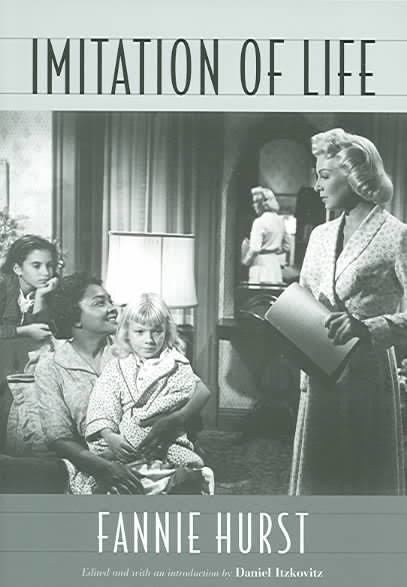Language English Originally published 1933 Genre Novel Country United States of America | Publication date 1933 Publisher Peter F. Collier | |
 | ||
Media type Print (hardback & paperback) Similar Fannie Hurst books, Novels | ||
Imitation of Life is a popular 1933 novel by Fannie Hurst that was adapted into two successful films for Universal Pictures: a 1934 film, and a 1959 remake. It dealt with issues of race, class, and gender.
Contents
- Plot summary
- Literary significance and criticism
- Film TV or theatrical adaptations
- Novel publication details
- References
From the turn of the 20th century until the Supreme Court ruled in Loving v. Virginia (1967), numerous Southern states passed laws enforcing a "one-drop rule", requiring that persons of any known African ancestry had to be classified in records as black. Only black and white were recognized as racial categories, and blacks were restricted by racial segregation laws. Virginia passed such a one-drop law in 1924.
Plot summary
Set in the 1910s at "the Shore" of New Jersey, the novel explores issues of race and class in early 20th-century America. Bea Chipley is a quiet, mousey, Atlantic City teenage girl whose mother dies, leaving her to keep house for her father (Mr. Chipley) and Benjamin Pullman, a boarder who peddles ketchup and relish on the boardwalk and sells maple syrup door-to-door. Within a year, her father and Pullman decide that she should marry Pullman; she soon becomes pregnant and has a daughter named Jessie. Her father suffers an incapacitating stroke, confining him to a wheelchair, and Pullman is killed in a train accident. Bea is left to fend for her father and Jessie by herself.
She takes in boarders to defray expenses, as well as peddling Pullman's maple syrup door-to-door, using his "B. Pullman" business cards to avoid the ubiquitous sexism of the 1910s. To care for her infant daughter and disabled father, Bea Pullman hires Delilah, an African-American mammy figure, who has an infant daughter Peola. The girl has "light skin" (as described then; it shows her partial European descent, which is not as obvious in her mother.)
As Delilah is a master waffle-maker, Bea capitalizes on Delilah's skills to open a "B. Pullman" waffle restaurant. It attracts many of the tourists at the Shore. She eventually builds a nationwide and then international chain of highly successful restaurants from this start. Frank Flake, a young man intent on entering medical school, becomes Bea's business manager.
Jessie and Peola have grown up side by side. Peola is painfully aware of the tension between her white appearance and black racial identity (as imposed by society). She continually attempts to pass as white to gain wider advantages. Disturbed by her daughter's unhappiness, Delilah encourages the girl to take pride in her black "race." Eventually, after living in Seattle for several years as a white woman, Peola severs all local ties. She marries a white man and moves to Bolivia to pass permanently. Heartbroken, Delilah dies soon after.
Bea falls in love with Flake, who is eight years her junior. Jessie, by now in her late teens, comes home for a visit just as Bea is planning on selling the "B. Pullman" chain to marry Flake. The three are mired in a love triangle in the last dozen or so pages, resulting in a tragic ending.
Literary significance and criticism
Hurst was a Jewish woman and supporter of feminist causes. She also supported African Americans in their struggle for greater equality. She was deeply involved in the Harlem Renaissance, especially with Zora Neale Hurston. Hurst helped sponsor Hurston in her first year at Barnard College and employed Hurston briefly as an executive secretary. The two traveled together on road trips that may have contributed to Hurst's understanding of racial discrimination. Both Hurston and Langston Hughes claimed to like Imitation of Life, though both reversed their opinion after Sterling Allen Brown lambasted both the book and the 1934 film adaptation in a review entitled "Imitation of Life: Once a Pancake", a reference to a line in the first film.
The novel Imitation of Life continues to provoke controversy, as some read it as heavy-handed stereotyping, while others see it as a more subtle and subversive satire of and commentary on race, sex, and class in early 20th-century America. At the time, Peola was described as a "light-skinned black"; people did not refer to the history of relations between Europeans and Africans that produced such mixed-race descendants. The book was adapted twice as film, in 1934 and 1959. Both the novel and films have remained deeply embedded in the American consciousness. Toni Morrison named one of her characters "Pecola" in her 1970 novel The Bluest Eye.
